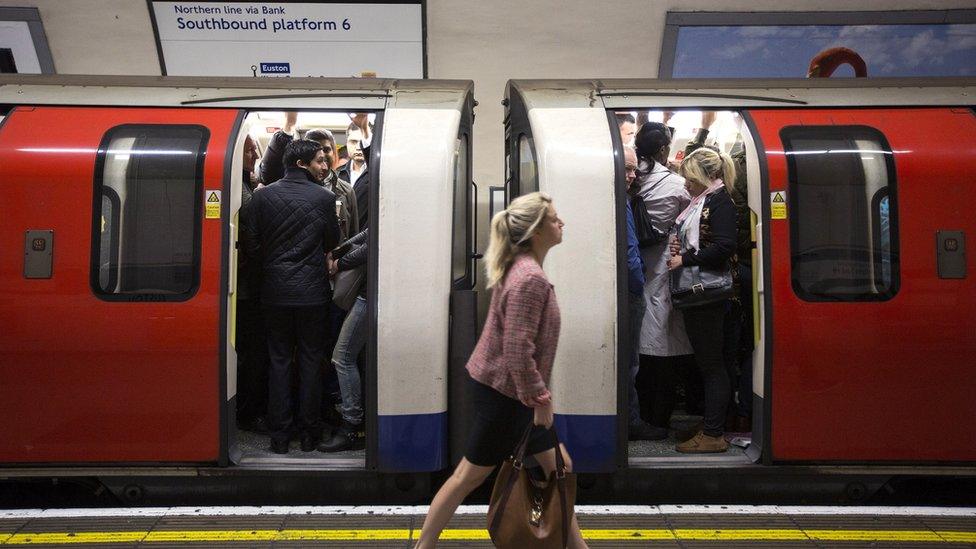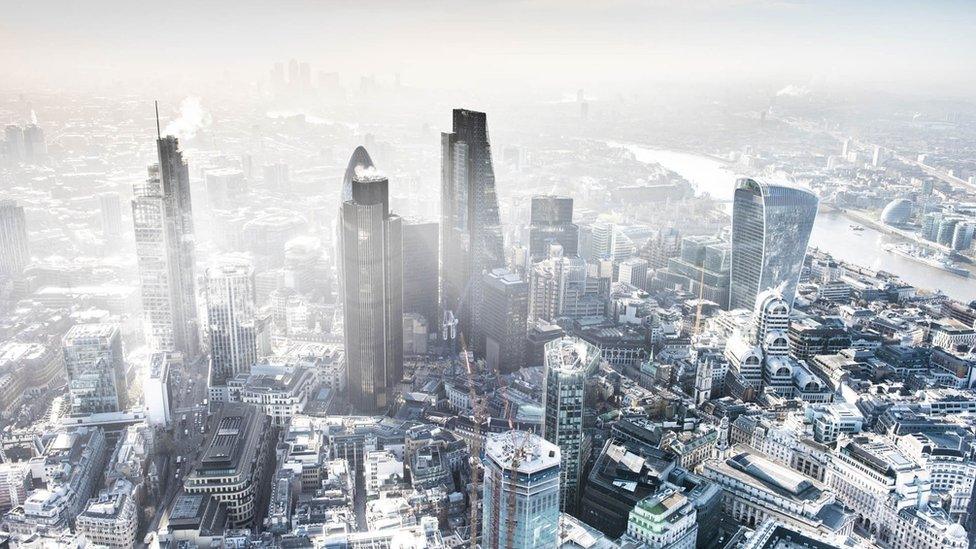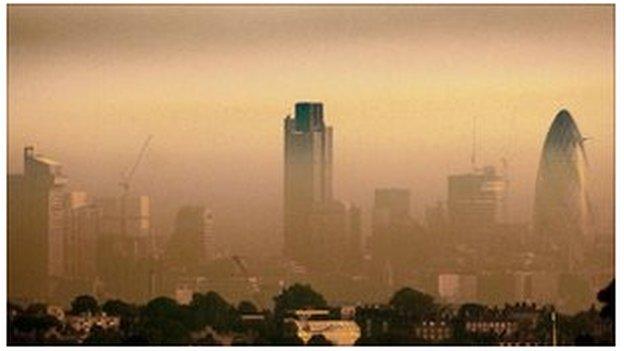Tube 'higher than driving' for air pollution, study finds
- Published
- comments

Going through tunnels expose passengers to more pollutants, the study found
Travelling on the Underground exposes commuters to more than eight times as much air pollution as those who drive to work, a university study has found.
Monitors worn by commuters found those who travelled on the Tube were exposed to 68mg of harmful pollutant PM10, whereas car drivers had 8.2mg.
The University of Surrey study, external found when train windows were open, commuters were exposed to more pollutants.
Drivers were not as exposed because cars filter the pollutants out.
But although drivers are not exposed to as many pollutants, the types given out by cars are more harmful than the ones found on the Underground.
'Environmental injustice'
The study found PM levels were highest on trains on the Victoria and Northern lines, because they all had their windows open, heightening the effect of pollutants when going through tunnels.
The study did not include people who commute on foot or cycle.
The study also found:
Passengers on the District Line in trains with closed windows were exposed to far lower concentrations of PM than those travelling on trains with open windows on the same line
Bus commuters were exposed to an average of 38mg of PM10, roughly half as much as Tube passengers but five times as much as cars
The morning commute has more pollutants than the afternoon and evening journeys
Although car drivers were the least exposed, they caused the most pollutants.
Dr Prashant Kumar, who led the study, said: "We found that there is definitely an element of environmental injustice among those commuting in London, with those who create the most pollution having the least exposure to it.
"The relatively new airtight trains with closed windows showed a significant difference to the levels of particles people are exposed to over time, suggesting that operators should consider this aspect during any upgrade of Underground trains, along with the ways to improve ventilation in underground tunnels."
- Published23 January 2017

- Published19 January 2017

- Published5 August 2016

- Published5 July 2016

- Published14 March 2016

- Published23 February 2016

- Published15 July 2015
